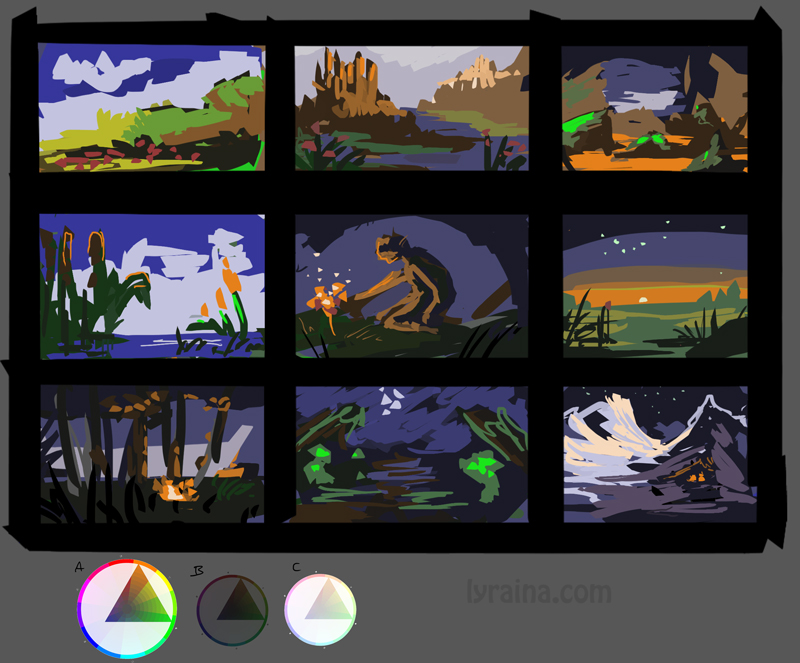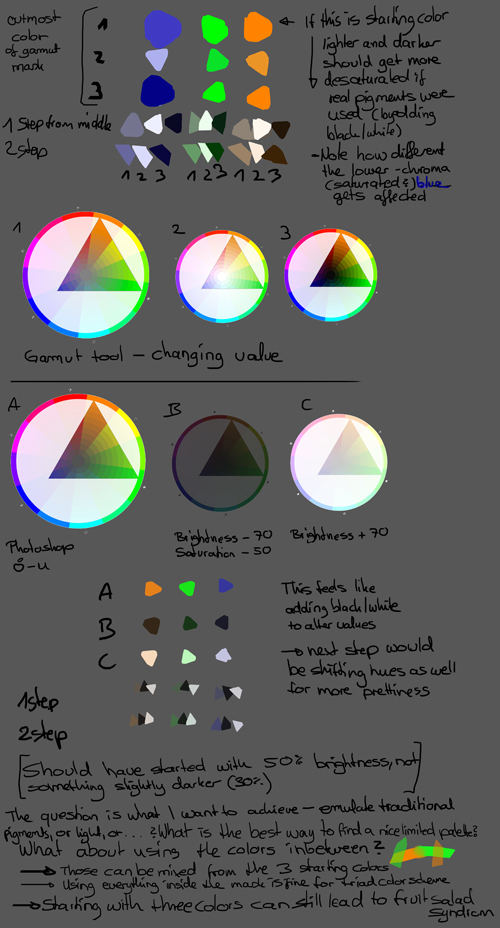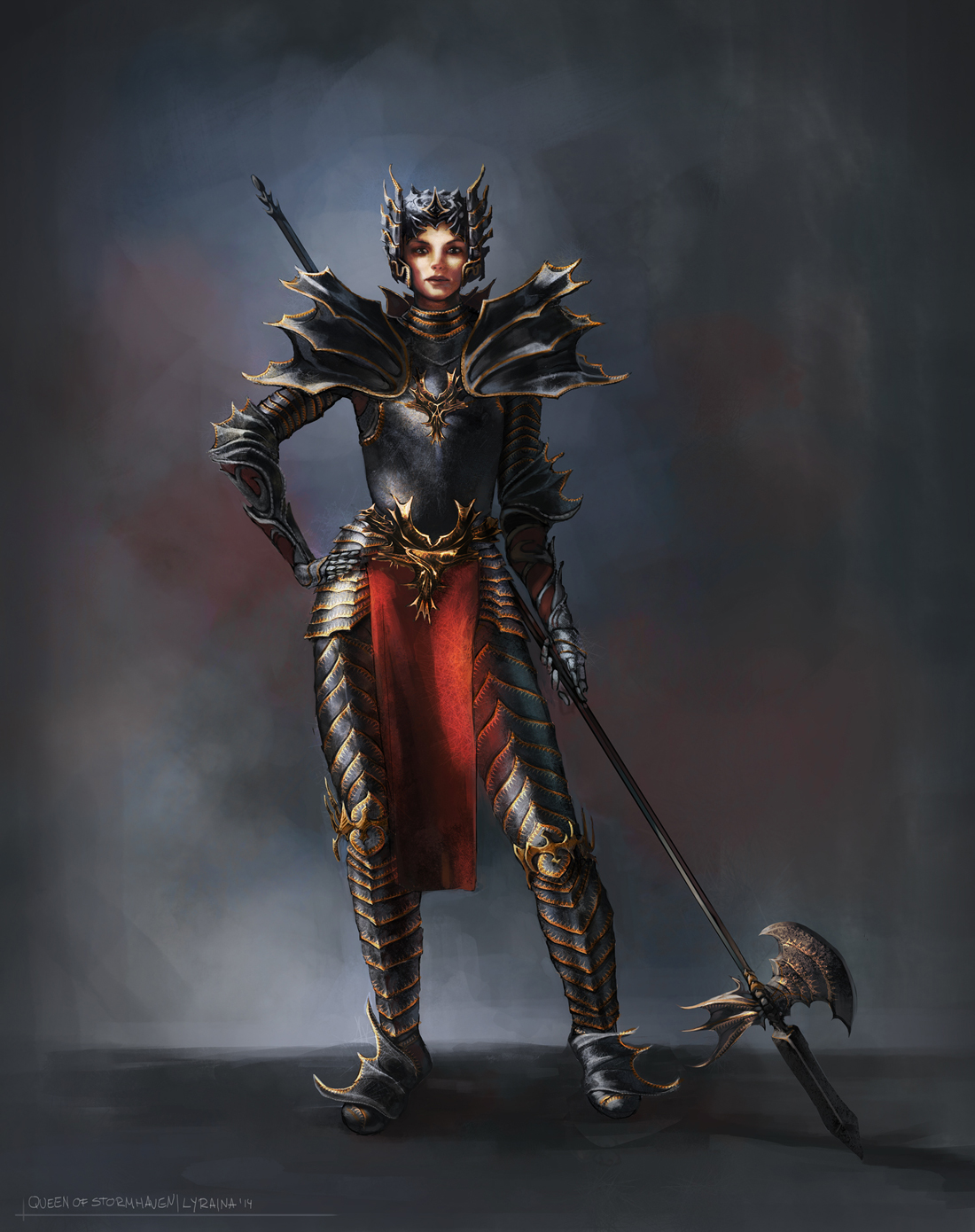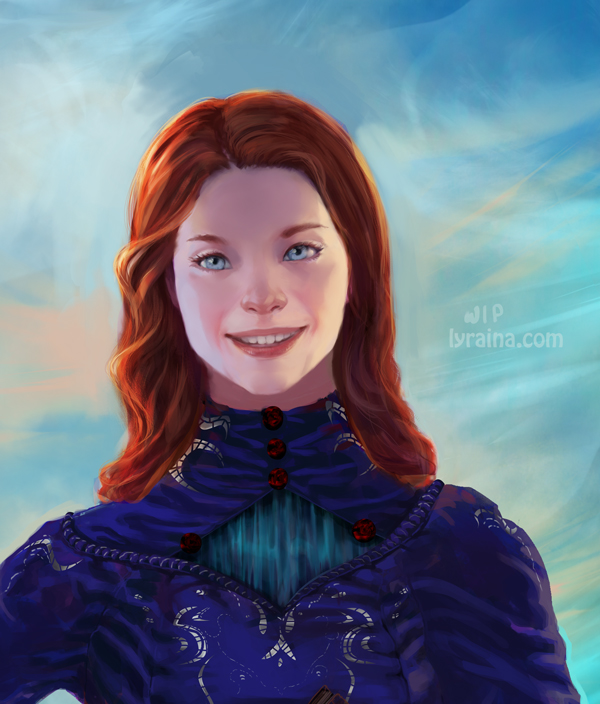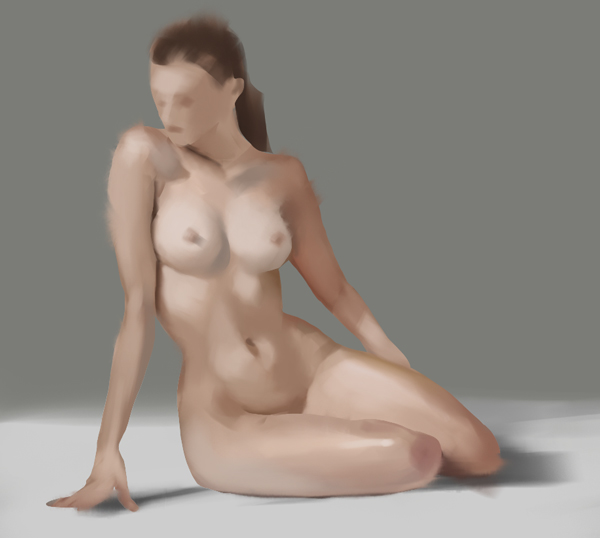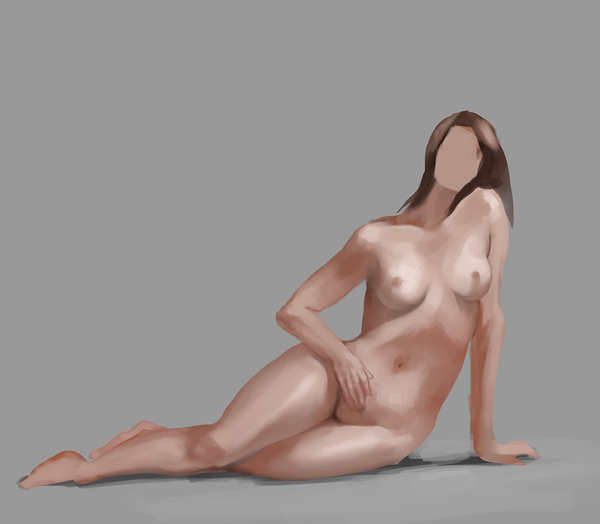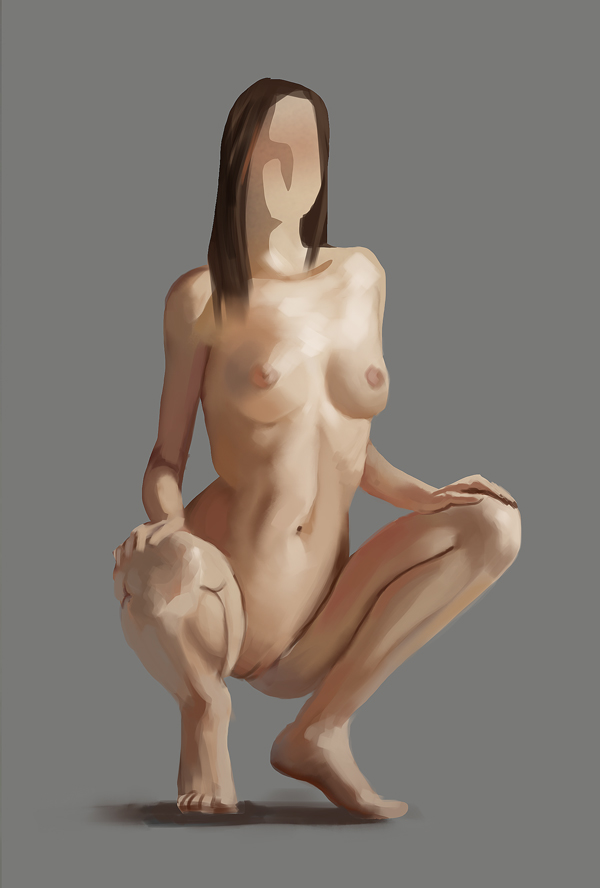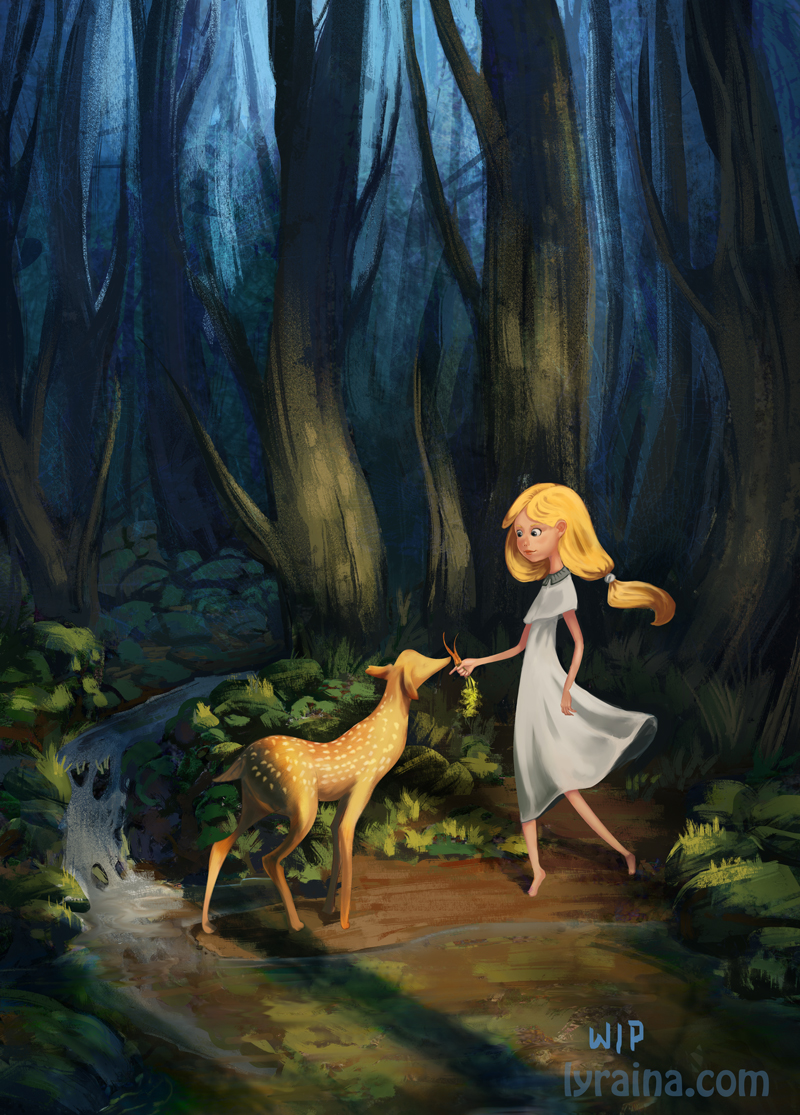Cyprinus: Thank you - at least I am not alone with that problem... yeah noses are tough. Always have to be careful not to paint pig-noses. That is an awesome pinterest collection, thank you for linking it! Saved it and will study from it :)
denikina: Thank you!
LongJh: Wow, thanks a lot for all that feedback! Not grouchy at all! ;) The axe is actually a halberd. You're right about the focus being on the legs... that's not good. Should have made the breastplate more ornamental, and less on the legs.
Hair: Absolutely... tried several different ways to paint that and failed, so now it is something vague inbetween. Need to practice hair! Heads and hands... yeah... need to improve! ò_ó Thanks again for taking the time to write up such an extensive crit :)
meat: Uhm... I could have thought of that myself... but I didn't so thanks for the suggestions. I am actually more and more discovering the value of writing things down and studying it like this, instead of (just) copying stuff. It's something I have neglected too much so far, I think. Thanks :)
Major text block Gurney Update inc!
Reflected Light
- Every object reflects light -> bounce light with color fill shadows
- Shadow color is sum of all reflected sources and local color
- Outside: Planes facing up get sky blue reflection, planes facing downwards warmer ground light
Spotlighting
- Sets focus of attention
- Shape of light can be used for narration: What light shines into the scene and why?
- Adjacent colored spotlights cast shadows with chromatic edges -> often 2 lights in theater
- Classic cinema used "eyelights" to place focus on eyes
Grays and Neutrals
- grey setting allows for bright color accents
- quiet, reflective mood
- include subtle variations, don't just pick 1 gray -> shift value and hue!
- best mixed from color compliments (also looks good if then placed near those colors)
- "better gray than garish" (Ingres)
Green
- often avoided in painting, covers and on stage
- often done wrong
- light shining through new leaves: "vegetable green" (highly chromatic yellow-green)
- ways to handle greens:
1. mix it yourself from blue/yellow
2. lots of variation
3. break the green overkill by using pink or red primed canvas (which shines through) or mix in reddish grays while painting
Gradation
- color gradations between hues, dull/saturated colors, values
- don't just let them happen, but think about them and pre-plan (pre-mix)
- both on small and large scale
Tints
= adding white to a color -> "pastel" color
- distant hues on a hazy day
- combine with darker colors in other parts for contrast
- adding white: makes hues a bit bluer
- glazing over white: a bit more chromatic
Warm Underpainting
- pre-toned surface: imprimatura / underpainting
- Venetian red or burnt sienna
- good for everything green, blue (sky, foliage)
- color peeking through makes colors look alive
Sky Panels
- surface prepared with a sky gradation for future use
- good for dark details/trees etc against a light sky
Monochomatic schemes
- grisaille (in gray) can be preliminary step to plan values, or part of the process (glazed over)
- draw attention in today's colorful world
Warm and cool
- cool (blue-green, blue, violets): winter, night, sky, shadow, sleep, ice; quietness, restfulness, calm
- warm (yellow-green, oranges, reds): fire, spices, blood, energy, passion; sunsets, flowers, autumn
Colored light interactions
- Two different lights: lit areas mix and create a new color
= additive color mixing (behaves differently than pigments)
- colors get blended in the eye
- results in a higher value, brighter in tone
- i.e. green+red = yellow
- two different colored light sources on one form result in colored cast shadows (of the other color, respectively)
Triads
- any three basic colors (does not have to be full-chroma)
--> see gamut masking section
Color Accents
- accent attracts the eye to the center of interest
- usually complement or near complement, more highly chromatic
- can also spice up non-focal-areas if added throughout the picture
- sneak in hints of (complementary) color for more interest (ie yellow or orange in purple image)
Gamut mapping/masks (duh, should have read that earlier)
- Subjective primaries are the colors with the highest chroma (outside corners of the triangle)
- Subjective secondaries are the lower chroma mixed colors between primaries
- Saturation cost of a mixture: intermediate mixtures have lower chroma
- !!! subjective neutral is in the middle of the gamut mask, can be shifted towards whatever hue is dominant. does NOT neccessarily have to be zero-chroma gray!!
- photography equivalent would be color filters
[- to do: try out how to achieve different mood through varying which colors are used predominantly and which as accent in a very limited palette!]
Shapes of Color Schemes
- triangle is the most common shape with 1 dominant color
- atmospheric triad: equilateral triangle shifted to one side of the wheel without overlapping the center (look what that means for the subjective neutral!)
- complementary gamut: long stretched diamond, neutral coincides with center of wheel (= stable)
- NEAR complementary gamut: diamond gets shifted a bit off-center - interesting but a bit unsettled
- mood and accent scheme: most colors stay in one area, with a little bit of complementary accent - no mixing in between!
-----
Okay, so yesterday Gurney maganed to trigger like 500 new questions for every one he answered in his chapter I read XD Don't mind the following wall of text and the color wheels, just some thoughts on my part - writing it down helps me think and understand better. If someone actually reads it and has some thoughts or corrections anyway, I'm happy to hear them.
Limited Palette (triad) testing, although at first I was not too strict with picking colors, just something along the lines of "start with three colors, and if you go darker or lighter you must decrease saturation". Not sure if that even makes sense (but in my head it does - I was thinking of adding black or white paint). Although I wonder if I am even supposed to deviate from my starting values, basically using black and white in addition to my main colors, when working with specific color schemes (be that triad, tetrad or whatever). Or if I am supposed to stick with the starting colors and everything I can mix with those. That makes a huge difference in the value range... Probably depends on the effect one wants to achieve with the painting/study. Gurney's triad example had a normal value range, so I think it is ok to use black and white as well.
Next I tried to adjust the whole color wheel/gamut mask thing instead of eyeballing it. Which led to a whole new confusion: When I make the gamut mask layer darker (with ctrl-u), saturation doesn't change on my color wheel, it only becomes darker. When I make it lighter though, saturation also decreases (a lot). On the other hand, if I darken or lighten with the levels tool (ctrl-l), the darkening seems to mess a lot more with the saturation than lightening. (although that changes the hue as well, I think?)
Bonus observation: If I change the value slider in the gamut mask tool, saturation changes in both directions, darker and lighter. The photographer in the back of my mind tells me I should understand that, but right now I'm missing a part of the puzzle.
I would like to do this in oils eventually, when I have a better grip on the medium and can concentrate on colors. Funny observation: In the first batch, I didn't even once use the intense blue. Which probably means I could (should) have chosen a different gamut mask to begin with. In the second batch, I found "three" colors (and everything that can be mixed with those) to be plenty, especially all those reds and purples I got from the orange/blue midpoint, felt like I was using a lot more than only 3 colors. Not sure if I did something wrong here or if that's the point of the exercise.
On a side note, everybody who checks their values in PS should watch (and try out) this:
https://www.youtube.com/watch?v=WUt9WhZfjl8 (I also suspect that there is a connection to the topic above which I don't 100% grasp yet)

